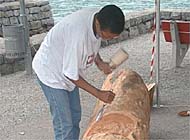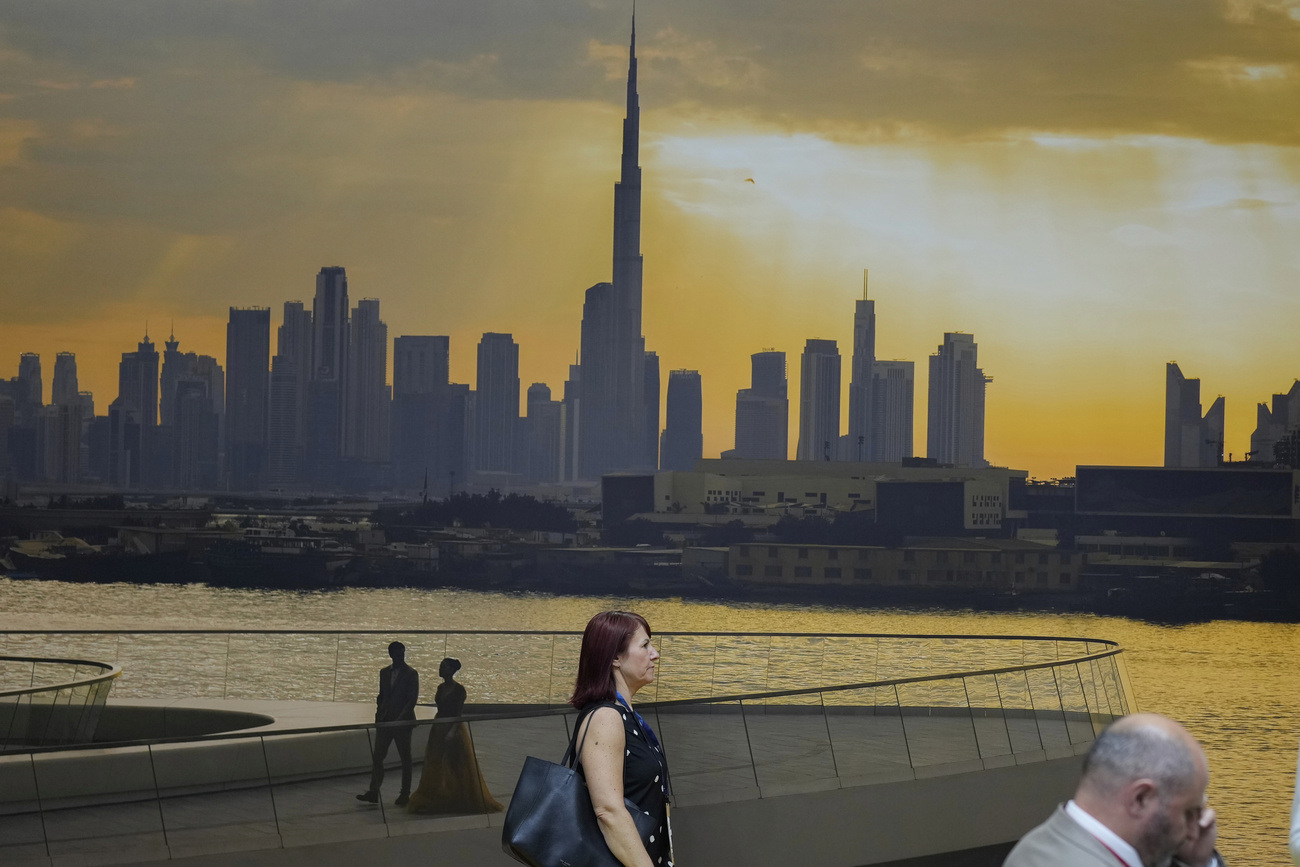Carving a modern image

It is hard to find a setting more representative of Switzerland than Brienz, nestling on the shore of Lake Brienz. It is here that holidaymakers expect to find the traditional. But some locals would like to change the town's image.
During the height of summer, throngs of tourists disembark from the paddle steamer at Brienz or hop out of chartered buses. Taking a break from a tour of the lake or stretching their legs before heading over the Brunig pass to Lucerne, they have been told Brienz is the perfect place to buy a souvenir.
There’s an obvious choice of souvenir – the town is the woodcarving centre of Switzerland.
Toutrists scoop up some of the artwork Brienz for which Brienz is famous – traditional nativity or pastoral scenes. But they are works the woodcarvers themselves would rather not have to do, despite their popularity.
“We’re aware of the younger generation’s need to change – they prefer abstract carvings. The change is also necessary, I love the new art,” said Rudolf Thomann, who runs one of Brienz’s largest woodcarving centres. He was also instrumental in organising an international symposium in the town.
Artists from across Europe, Africa and Latin America were invited to take part in the week-long event. Based on the theme “light and shadow”, they worked along the scenic quay, exposed to the curious tourist. (The finished sculptures will be on display in Brienz until the end of August.)
“Persist in the shadows, drawn to the light”, is the title of the sculpture by the local artist, Pit Fischer. It’s made of two androgynous figures, one standing on top of the other. The upper figure stretches upward, toward the sun. The lower one, its head covered, crouches, looking to the ground.
“The figure representing shadow is meditational, while the light is energy. The shadow looks north, the light south, following the sun’s trajectory. But they are joined because shadow can’t be without light, and light can’t be without shadow,” explains Fischer, who admits it is difficult to find buyers for such works.
A little further down the quay, Nigerian carver Fatima Rubi is putting the finishing touches to her abstract piece. At first glance, it could be a piece of twisted driftwood, shaped by nature. But it is Rubi’s chisel which is responsible for the twist.
She describes herself as an optimist, and her work is meant to represent hope for the future, while not forgetting that life has a way of taking many twists and turns. She has cut a round hole out of the top and a ball in the base.
“From the hole here, when the sun shines through at a particular time of the day, it casts a shadow on the ball, which also represents the past,” she says. “For me I’ve always liked to work on stylised forms when it comes to wood because I like to feel the form and see the way the grains move.”
Emilio Farrera from Mexico is producing the only movable sculpture at the symposium. “Discovering the light” looks like a simple hollowed-out log lying on its side. But Farrera has split it into two equal halves, placed a simple figure inside and carved three oblong holes in one end.
He says that the rays of the sun enter the holes, casting shadows horizontally through the wood. “I try to express equilibrium between opposites and I want to respect the material, the wood, its natural form and its mass.”
The international symposium not only brought artists from very different backgrounds and cultures together, it has given local carvers like Pit Fischer the opportunity to bring their art to the public. “We spend most of our time in our workshops, nobody sees us, nobody can imagine how much time and energy is needed to do something like this, so it’s very important to be outside like this, to show people what we’re doing and to talk with them.”
Rudolf Thomann doesn’t think the gathering will change the buying habits of holidaymakers, despite its success. “We still have to sell souvenirs. We’ll have to find other markets for the new works, in big cities like Zurich where the buyers have different needs.” ·
On this day, storm clouds come in across the lake, darkening the sky. They move away across the northern ridge before reaching Brienz, and the summer sun returns in its full intensity, bringing the sculptures to life.
by Dale Bechtel

In compliance with the JTI standards
More: SWI swissinfo.ch certified by the Journalism Trust Initiative










You can find an overview of ongoing debates with our journalists here . Please join us!
If you want to start a conversation about a topic raised in this article or want to report factual errors, email us at english@swissinfo.ch.